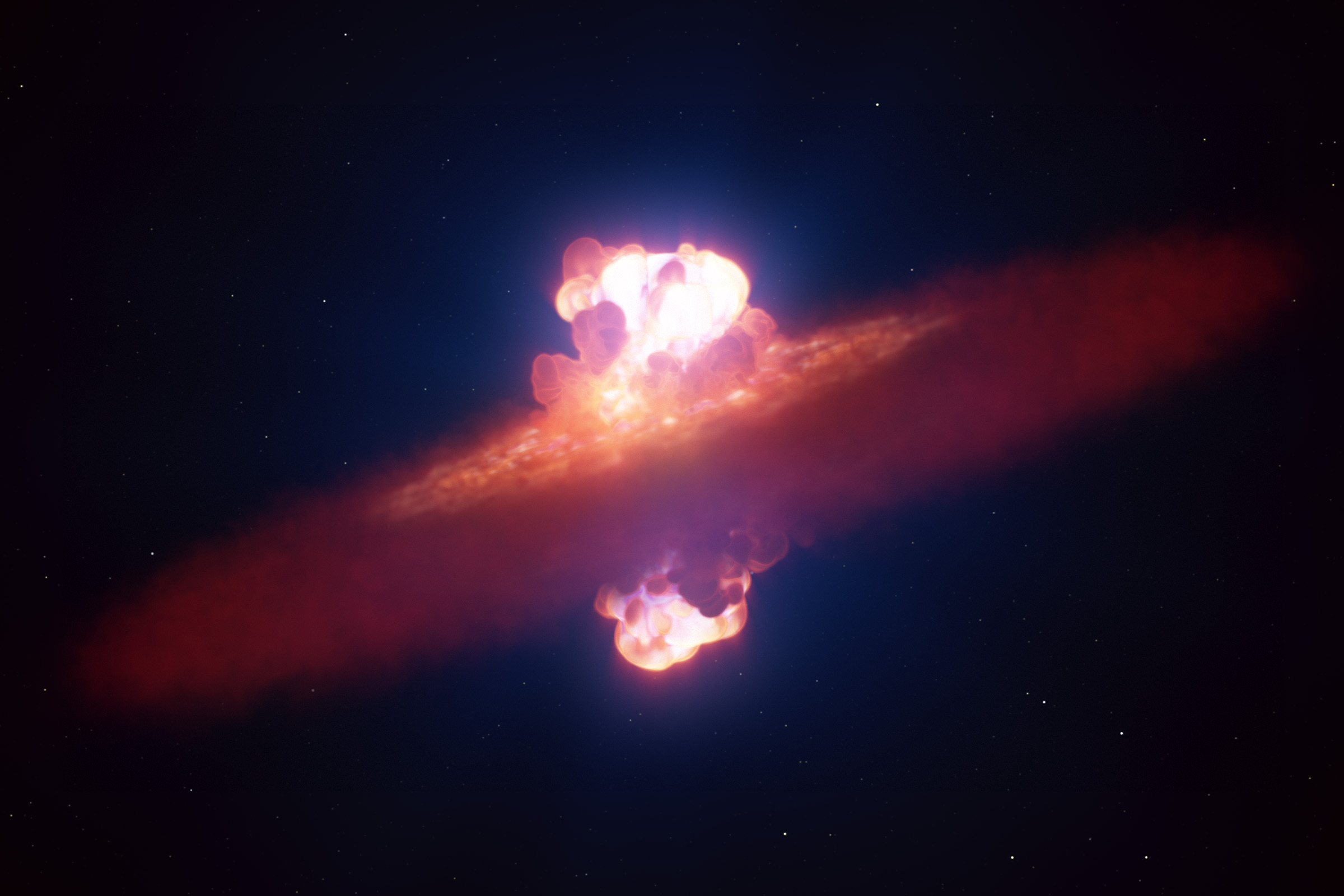Supernovas, the catastrophic explosions that follow the collapse of a star, are essential to our understanding of the cosmos. They serve as the yardstick we use to measure vast distances across space. And it was observations of supernovas, in fact, that allowed astronomers in 1998 to uncover that the universe is expanding at an accelerating rate.
But much about them remains a mystery. Since they happen in an instant, witnessing the actual moment of the explosion has been tricky.
Now, in a new study published in the journal Science Advances, an international team of astronomers say they’ve gotten the earliest and most detailed peek yet at one of these stellar blasts right as one unfolded.
In observations made with the European Southern Observatory’s Very Large Telescope, the astronomers were able to document the powerful shockwave caused by the star’s collapse as it tore through the star’s surface — revealing, for the first time, the actual shape of these explosions.
“The geometry of a supernova explosion provides fundamental information on stellar evolution and the physical processes leading to these cosmic fireworks,” lead author Yi Yang, an assistant professor at Tsinghua University in Beijing, China, said in a statement.
Stars many times more massive than our Sun are ticking time bombs. The powerful fusion reactions at their core push against the force of their own crushing gravity, suspending them in an uneasy equilibrium that can last for millions of years or more. But when they eventually burn through all of their fuel, the outer layers instantly collapse, smashing into the depleted core and bouncing off it. This creates a vicious shockwave that tears through the star’s surface, utterly obliterating it in the process. The result is a supernova: one of the brightest and most powerful explosions in the cosmos.
That’s the theory, anyway. The finer points of how a supernova shockwave is formed is still somewhat of mystery, since they’re nearly impossible to observe as they happen. Out of the trillions of stars in the night sky, astronomers would have to already be imaging a star at the instant it went supernova, before the disaster site becomes shrouded by gas, making it impossible to see. And the unfortunate star would also have to be close enough to examine in detail.
With this latest blast, designated SN 2024ggi, the stars — so to speak — aligned. Located 22 million light years away, astronomers imaged it within 26 hours after it was first detected on April 10 last year, and their efforts paid off.
They used a technique called spectropolarimetry to tease out the explosion’s geometry, revealing that the shockwave expanded symmetrically, but was elongated in shape like an olive, instead of being spherical. When the blast slammed into material surrounding the star, its shape flattened, but continued to expand symmetrically.
“The very first [particles of light] and matter do not shoot out spherically from the star’s surface,” Yang told ScienceNews. “Scientifically this is very important, because the intrinsic shape of the shock breakout tells us a lot of how it was triggered at the heart of the star in the first place.”
The findings are especially tantalizing because of the type of star that died: a red supergiant weighing between 12 to 15 times the mass of the Sun. Red supergiants are among the largest stars in the cosmos, with diameters up to thousands of times larger than our home star. That’s because they’ve burned through their main reserves of hydrogen and began cooling down, and puffed outwards as a result.
Puzzlingly, we should expect to see many of these bloated and heavy stars explode in supernovas, but red supergiants have rarely been observed exploding. Recent observations from the James Webb Space Telescope, however, suggested that red supergiants do explode frequently but are simply hidden from view, and now it appears that their blasts are fairly typical, too.
“These findings suggest a common physical mechanism that drives the explosion of many massive stars, which manifests a well-defined axial symmetry and acts on large scales,” Yang said in the statement.
More on space: Scientists Discover That the Universe Is Getting Worse and Worse
Source link
#Astronomers #Witness #Moment #Fatal #Shockwave #Bursts #Surface #Star











